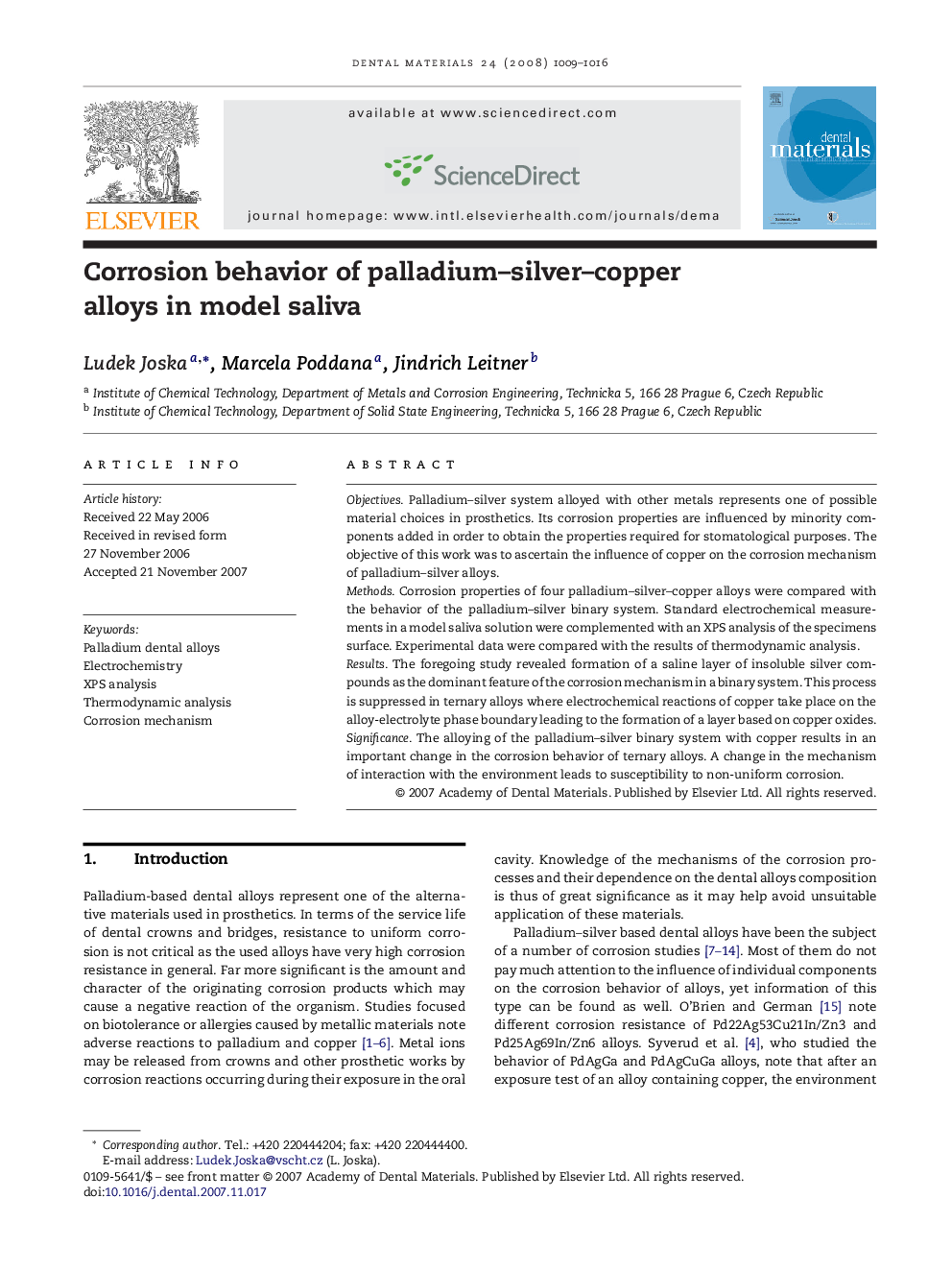| Article ID | Journal | Published Year | Pages | File Type |
|---|---|---|---|---|
| 1422751 | Dental Materials | 2008 | 8 Pages |
ObjectivesPalladium–silver system alloyed with other metals represents one of possible material choices in prosthetics. Its corrosion properties are influenced by minority components added in order to obtain the properties required for stomatological purposes. The objective of this work was to ascertain the influence of copper on the corrosion mechanism of palladium–silver alloys.MethodsCorrosion properties of four palladium–silver–copper alloys were compared with the behavior of the palladium–silver binary system. Standard electrochemical measurements in a model saliva solution were complemented with an XPS analysis of the specimens surface. Experimental data were compared with the results of thermodynamic analysis.ResultsThe foregoing study revealed formation of a saline layer of insoluble silver compounds as the dominant feature of the corrosion mechanism in a binary system. This process is suppressed in ternary alloys where electrochemical reactions of copper take place on the alloy-electrolyte phase boundary leading to the formation of a layer based on copper oxides.SignificanceThe alloying of the palladium–silver binary system with copper results in an important change in the corrosion behavior of ternary alloys. A change in the mechanism of interaction with the environment leads to susceptibility to non-uniform corrosion.
